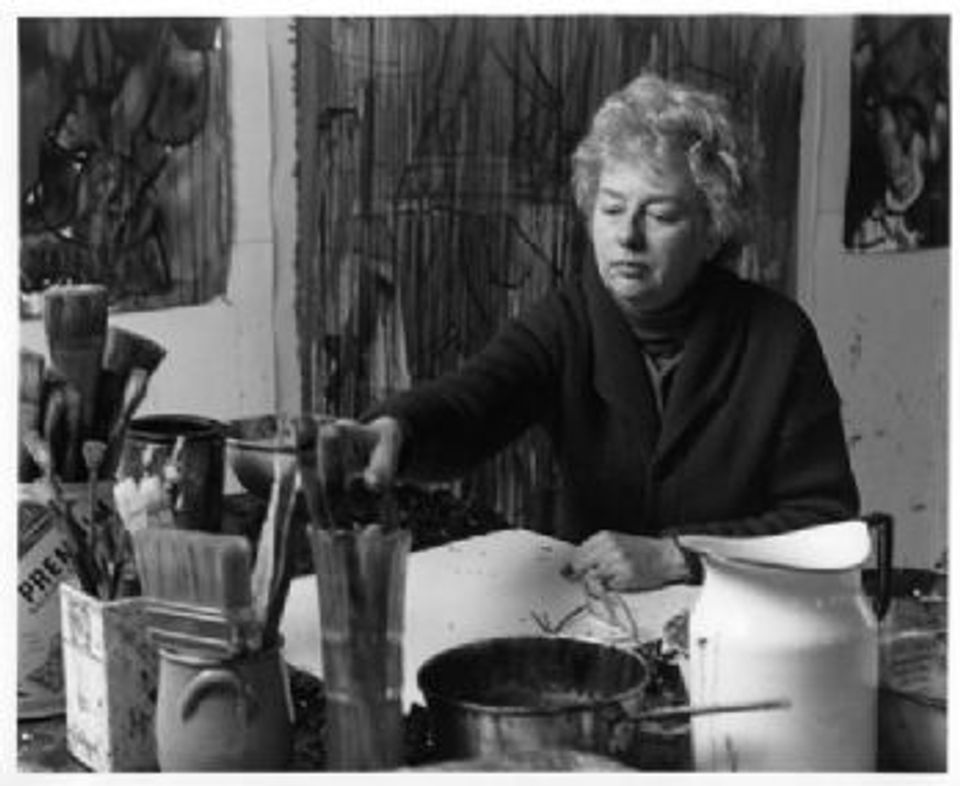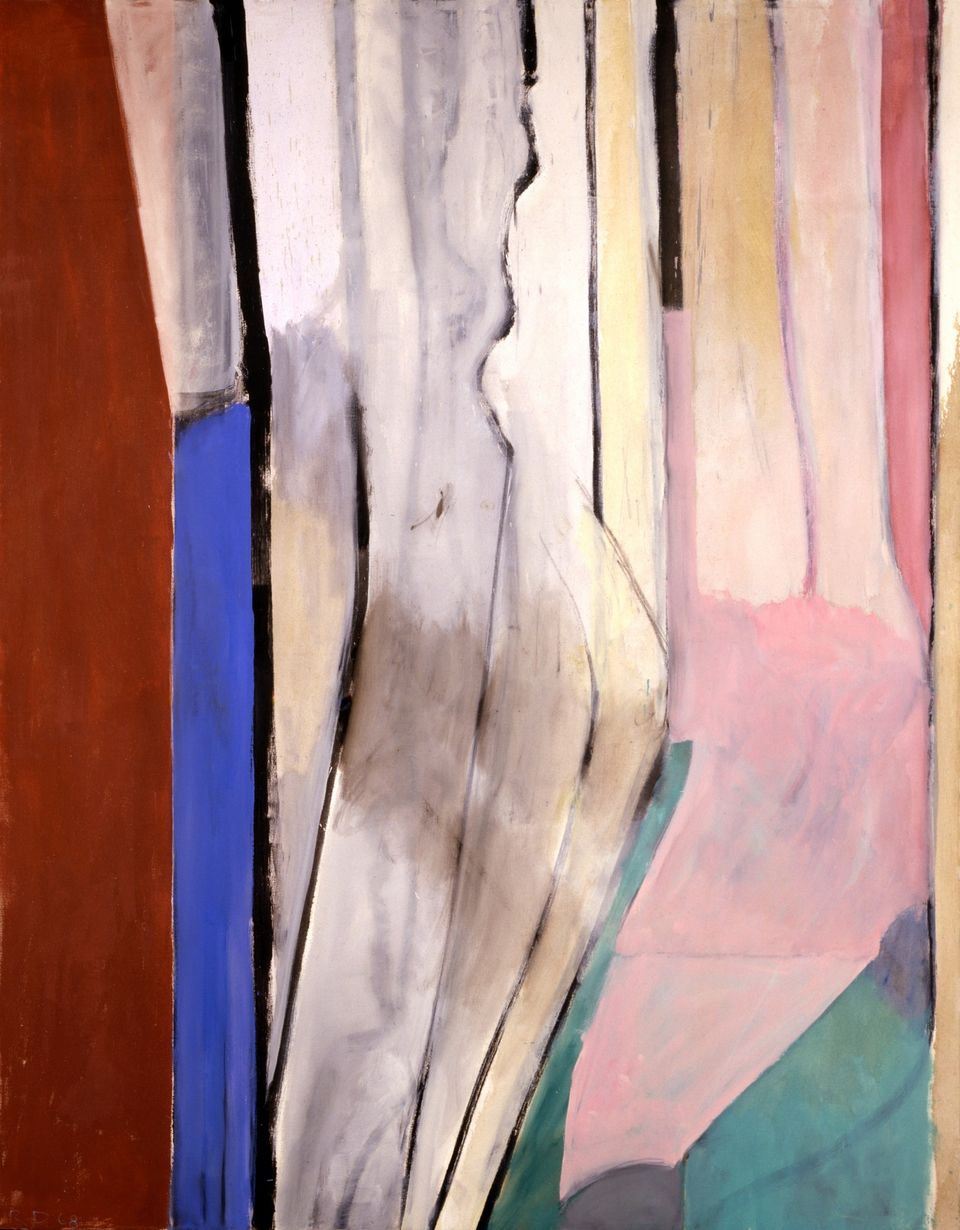Grace Hartigan

- Born
- Newark, New Jersey, United States
- Died
- Timonium, Maryland, United States
- Active in
- Baltimore, Maryland, United States
- Biography
Grace Hartigan was a painter who variously drew on art history, everyday life, and poetry as she moved across figuration and gestural abstraction. “I’m a restless artist,” Hartigan remarked, “As soon as I know how to do something, I get bored and I want to do something else.”
Hartigan first studied art in 1941 during a brief stint in California. Following the outbreak of World War II, she and her husband returned to their home state of New Jersey. After he was drafted, she supported herself and her young son by working as a mechanical draftsperson for a new Wright Aeronautical factory, attending Newark College of Engineering at night. When a coworker introduced her to the art of Henri Matisse, Hartigan “fell in love” and began studying painting. In 1945, she moved to New York City, where she experimented with the gestural painting associated with a group known as the New York School, which included Elaine and Willem de Kooning, Helen Frankenthaler, and Jackson Pollock. Hartigan’s early abstractions won critical acclaim, and she was included in pivotal exhibitions like the Ninth Street Exhibition of Paintings and Sculpture (1951). She held her first of many solo shows at Tibor de Nagy Gallery in 1951 and was the only woman included in the Museum of Modern Art’s influential international exhibition, The New American Painting (1958–59).
In 1952, Hartigan started combining her animated, abstract brushstrokes with figures and other recognizable subject matter, an unpopular move within her artistic circles. While undergoing this shift, Hartigan wrote: “If I must look conservative—reactionary—timid—or even (horrors) feminine—in the process then it must be.” Around this time, Hartigan reflected on her artistic development in relation to broader art historical precedents and began to “paint through art history,” working after paintings by celebrated European artists, from Peter Paul Rubens to Diego Velásquez. Hartigan also focused on subjects drawn from popular culture and everyday life, like in Modern Cycle (1967, SAAM). Beginning in the 1950s, she established relationships with poets that manifested in works like The Hero Leaves His Ship (1960, SAAM), based on a Barbara Guest poem, and her memorial painting Frank O’Hara, 1926-1966 (1966, SAAM). In other works, Hartigan addressed symbols of femininity, such as in Pallas Athena – Earth (1961, SAAM), part of a series on the goddess of “the arts and wisdom” through which the artist hoped to “say a lot about women and of course myself.”
In 1960, Hartigan left New York City for Baltimore, where she further elaborated her particular blend of abstraction and figuration. During the next decade, she used pages of coloring books found in the Walters Art Museum gift shop as models for paintings, renewing her engagements with art history. Hartigan began teaching at the Maryland Institute College of Arts in 1964 and continued until 2008, fostering the sorts of adventurous artistic inquiries she had long prized.
Authored by Katherine Markoski, American Women’s History Initiative Writer and Editor, 2024.
- Luce Artist Biography
Grace Hartigan grew up in New Jersey, where she married the boy next door after graduating from high school. She saw the 1935 film Call of the Wild and decided on a whim to move to Alaska with her new husband. They ended up penniless in Los Angeles, however, and Hartigan returned to the East Coast pregnant and alone. In 1948 she was mesmerized and fascinated by a Jackson Pollock exhibition and lived briefly on Long Island with the artist and his wife. She worked odd jobs in New York through the 1950s to pay for paint, and frequently visited the old-master galleries at the Metropolitan Museum of Art, absorbing images of nudes, demons, gods, heroes [and] saints. In 1959, Hartigan married Dr. Winston Price and moved with him to Baltimore, where she worked in a large studio in Fells Point for decades. (Mattison, Grace Hartigan: A Painters World, 1990)















